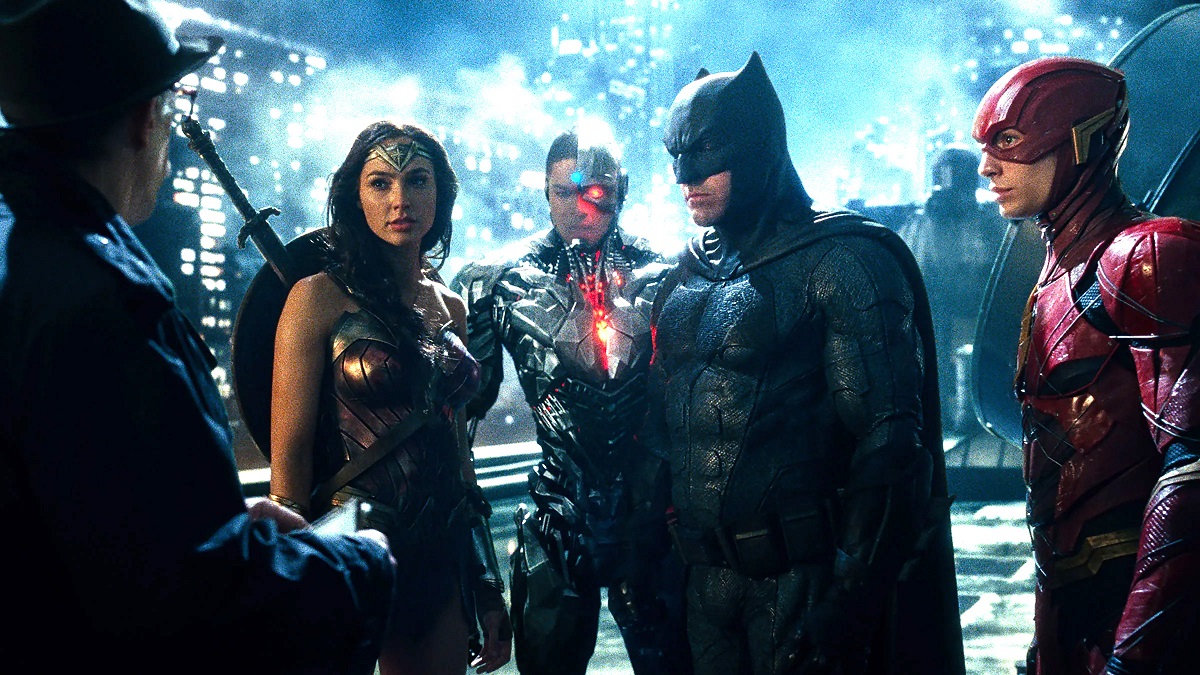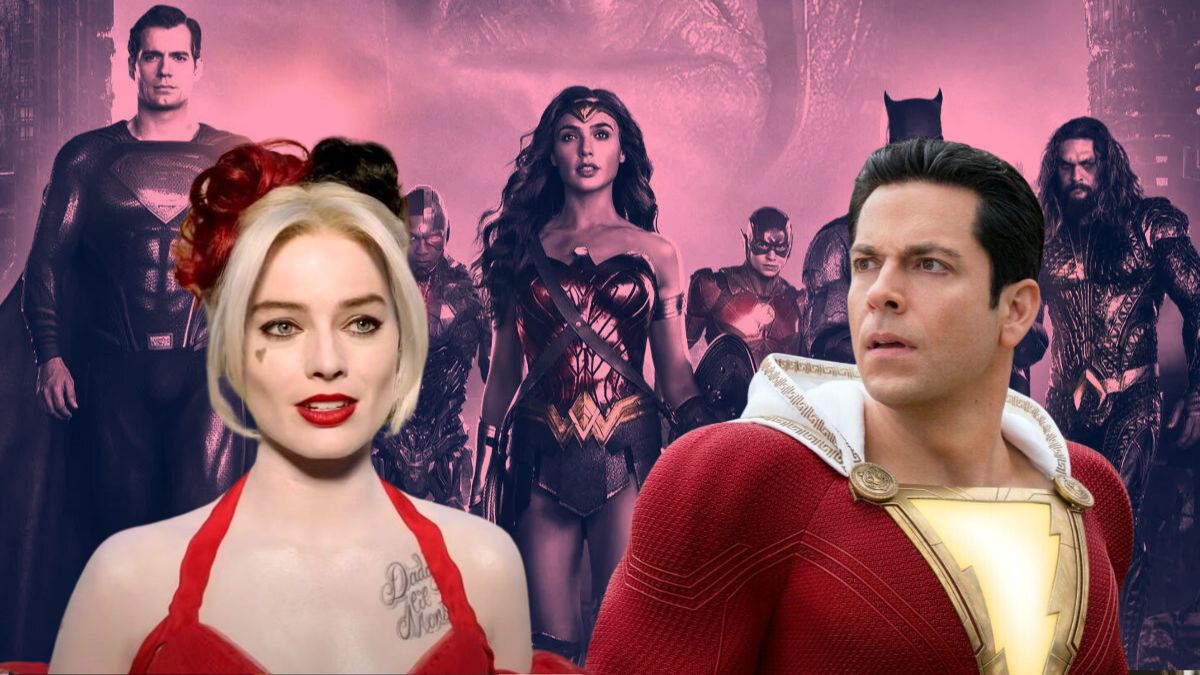Well, it was fun (some of the time, at least) while it lasted, but the DC Extended Universe has officially come to an end.
With the release of Aquaman and the Lost Kingdom on Dec. 22, 2023, the DCEU is defunct. Originally created as a rival to the MCU, the DCEU was launched with 2013’s Man of Steel, shortly followed by a Marvel-like phase full of projects planned for the next decade. As it happened various corporate upheavals and box office misfires ensured the franchise’s final line-up looked very different from what was first announced. All in all, however, the DCEU released 15 theatrically released films and one famous streaming-exclusive director’s cut.
The DCEU’s day is over now, though, due to James Gunn coming in to create a new shared universe — simply titled the DC Universe — from the ground-up, starting with 2024’s Creature Commandos animated series. It’s not as unwieldy as the MCU’s 30+ movies, then, but there’s still some confusion over the best way to watch the DCEU from start to finish.
Wonder (woman) no more, however, as here’s your guide on how to view the DC Extended Universe in chronological order.
What order do I watch DC movies in?

Wonder Woman (2017)
The first film on the DCEU timeline is 2017’s Wonder Woman. A prequel origins story for the Princess of the Amazons, following her role in Batman v Superman, Wonder Woman introduces Diana as she fights alongside Chris Pine’s Steve Trevor in the War to End All Wars. Most of the film takes place in 1918, aside from a handful of scenes set in the present day. This is the perfect starting point for your DC movie marathon.
Wonder Woman 1984 (2020)
Some scenes in this 2020 sequel take place prior to the events of the first Wonder Woman, but for the most part, Wonder Woman 1984 is set — you’ll never guess! — in 1984. Living among mortals in the 1980s, Diana is living a double life as an art historian at the Louvre and helping save the day in a (mostly) incognito fashion, which just about adds up with her being an unknown figure in the DCEU’s present-day.
Man of Steel (2013)
Man of Steel was the movie that kickstarted the DCEU and gave us Henry Cavill’s cult favorite incarnation of the Man of Tomorrow. The film showcases Superman’s origin story, including the destruction of Krypton, growing up as Clark Kent on Earth, and facing the fearsome General Zod. Man of Steel introduces key characters, components. and ideas that went on to shape the trajectory of the DCEU.
Batman v Superman: Dawn of Justice (2016)
Batman v Superman introduces the character of Bruce Wayne/Batman (Ben Affleck) into the DCEU. The movie initially positions itself as an action epic pitting the billionaire vigilante against the Last Son of Krypton, but it quickly becomes apparent that they will have to team up to deal with the dual threat of Lex Luther and Doomsday. This film acts as an all-important bridge for the DCEU as Superman, Wonder Woman, and Batman unite in live-action for the first time.
Suicide Squad (2016)
While the film takes place inside the DCEU and references the events of Batman v Superman, Suicide Squad’s narrative is mostly disconnected from the other films. The main cast of the movie consists of villains making their big-screen debuts — excluding the Joker, of course — including Harley Quinn (Margot Robbie), Deadshot (Will Smith), and plenty more of Task Force X — a black-ops team made out of expendable supercriminals — from the comics.
Justice League (2017)
The theatrical cut of Justice League was the first film to assemble DC’s premier group of heroes. The DCEU’s incarnation of the team consists of Batman, Superman, Wonder Woman, The Flash (Ezra Miller), Cyborg (Ray Fisher), and Aquaman (Jason Momoa). During the film, the League is forced to deal with the threat of Steppenwolf and the hordes of foes sent by Darkseid in his conquest to assemble the apocalyptic Mother Boxes.
Zack Snyder’s Justice League (2021)
After the fierce backlash to Justice League’s theatrical cut, Zack Snyder was invited back to complete his original vision for the film. The resulting Snyder Cut is a four-hour spectacle that adds new scenes explaining the reasoning for major choices in the film as well as adding whole new plot points and characters to jazz up the action. Although fans would prefer this one to be canon, filmmakers have confirmed WB considers 2017’s Justice League to be in continuity, so feel free to watch this one as an optional extra.
Aquaman (2018)
After his introduction in Justice League, fans got their first standalone take on Aquaman in 2018. In this movie, we pick up months after the events of (the theatrical) Justice League and see Arthur Curry return to Atlantis to deal with a threat of his power-hungry brother, Prince Orm, and the revenge-fueled Black Manta. The film also has some flashbacks which give viewers a glimpse into the origin story of the Atlantean hero.
Shazam! (2018)
For the past couple of decades, DC has been notorious for the dark and serious tone of its movies, but Shazam! completely threw that formula away and was well-received by fans and critics alike. This film takes place after the events of Justice League, but doesn’t rely on the previously established lore to build its characters. The standalone spectacular is simply an introduction and origin story to the hero of Shazam and his family (or *sigh* Shazamily).
Birds of Prey (and the Fantabulous… Whatever) (2020)
Birds of Prey (full subtitle: (and the Fantabulous Emancipation of One Harley Quinn) takes place around the same time as Shazam!, following the formation of the Justice League. The film follows on most directly from Suicide Squad, picking up with Harley Quinn as the lead, putting together her own team of anti-heroes to take on the crime boss Black Mask. The mish-mash group has a lot of chemistry, and there are a lot of stylish choices from directory Cathy Yan, making this a fun addition to the DCEU.
Shazam! Fury of the Gods (2023)
Due to the interconnectivity drying up (more on that in a moment), it’s difficult to pinpoint exactly where the latter-day releases fall in the timeline. However, thanks to the importance of the ages of the Shazamily, we know exactly where Shazam! Fury of the Gods falls. Billy Batson and his foster siblings are known to be two years older than in Shazam!, which means the sequel must take place in 2020. Just a sunny, happy alternate 2020 where no one’s heard of COVID.
The Suicide Squad (2021)
According to James Gunn, who made his retroactively significant DC debut with this one, The Suicide Squad takes place in 2021. Righting the wrongs of David Ayers’ first outing for the anti-hero team, The Suicide Squad introduces a massive cast of new characters and brings some familiar faces back into the fold to do what the Suicide Squad does: save the world and die along the way.
Peacemaker (season 1)
No, Peacemaker is not a movie, but as the only TV series set within the continuity of the DCEU it is a much-watch. Apart from following up on characters introduced in The Suicide Squad, including Jennifer Holland’s Emilia Harcourt (who went on to cameo in both Black Adam and Shazam! Fury of the Gods as well), it also features a memorable — and hilarious — appearance from the Justice League themselves.
Black Adam (2022)
By this point in the DCEU, WB was only interested in making standalone films rather than movies that are just one piece of the puzzle, a la Marvel, so even though Black Adam is ostensibly a Shazam! spinoff it’s mostly self-contained. It’s notable for introducing the Justice Society of America into the canon, establishing that superheroes have been around since long before Superman and the Justice League.
The Flash (2023)
The Flash is a tricky one to map out in the canon because it’s mostly set in an alternate universe in 2013, the Flashpoint timeline, in which a different version of the events of Man of Steel take place. However, if we use Barry Allen as the barometer then, as he comes from the present-day and is a veteran member of the Justice League at this point, it’s probably best to stick it on at this point in the watch-through.
Blue Beetle (2023)
In many ways, Blue Beetle is a taste of the DCU to come as James Gunn has confirmed Xolo Maridueña’s Jaime Reyes is the first DCU character. However, slightly confusingly, the film itself is counted as DCEU not DCU. At one point, we thought this might’ve meant Blue Beetle took place before some big DCU-birthing universal reset in The Flash, but now that doesn’t seem to be the case, so the film occupies the penultimate position in both the release and chronological watch orders.
Aquaman and the Lost Kindom (2023)
An inebriated Arthur Curry featured in The Flash‘s post-credits scene, so presumably we can infer that the events of The Lost Kingdom occur soon after that. Clearly, many years have passed since the events of 2018’s Aquaman, as the King of Atlantis is now a husband to Amber Heard’s Mera and a father to Arthur Junior, meaning we can probably say that it matches the real-life gap between the two films. It’s unintentionally fitting that the DCU ends with a movie introducing the next generation of the Justice League, just as we’re about to get a fresh roster of heroes in the DCU.

